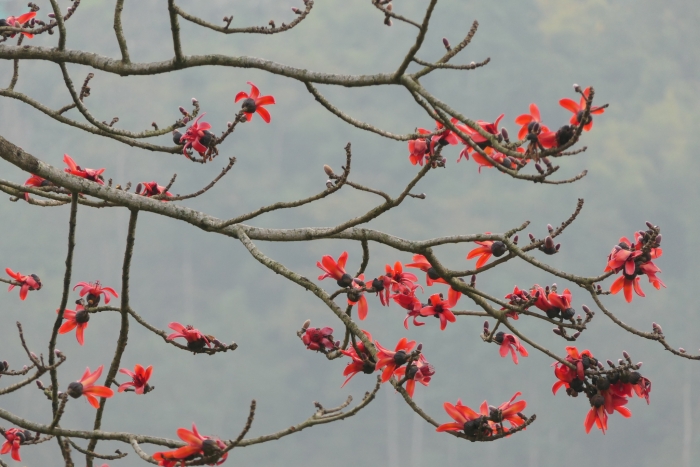Cotton Tree
(Bombax ceiba)
Cotton Tree (Bombax ceiba)
/
/

© Dinesh Valke
CC BY-SA 4.0






















Estimated Native Range
Summary
The cotton tree is valued for its ornamental qualities, particularly its striking flowers and unique spiny trunk. It is used in tropical and subtropical landscapes for shade and as a feature tree. The flowers are edible and used in some Asian cuisines, while the fibers have utility in the textile industry. In cultivation, Bombax ceiba requires full sun and does well in a variety of soil types, provided they are well-drained. It is drought-tolerant once established, making it suitable for xeriscaping. However, gardeners should be cautious as the tree can become invasive outside its native range, and it is important to check local regulations before planting.CC BY-SA 4.0
Plant Description
- Plant Type: Tree
- Height: 60-75 feet
- Width: 40-60 feet
- Growth Rate: Rapid, Moderate
- Flower Color: Red
- Flowering Season: Spring
- Leaf Retention: Deciduous
Growth Requirements
- Sun: Full Sun
- Water: Medium
- Drainage: Fast, Medium
Common Uses
Bird Garden, Butterfly Garden, Drought Tolerant, Edible*Disclaimer: Easyscape's listed plant edibility is for informational use. Always verify the safety and proper identification of any plant before consumption., Potted Plant, Showy Flowers
Natural Habitat
Native to tropical and subtropical Asia including India, southern China, and the Malay Archipelago
Other Names
Common Names: Indian Kapok , Cotton Tree , Semal , Kapoktree , Northern-Cottonwood , Red Cottontree , Red Silk-Cotton , Silk Cottontree
Scientific Names: Bombax ceiba , Bombax aculeatum , Bombax ceiba , Bombax heptaphyllum , Bombax heptaphyllum , Bombax malabaricum , Bombax thorelii , Bombax tussacii , Gossampinus malabarica , Gossampinus rubra
GBIF Accepted Name: